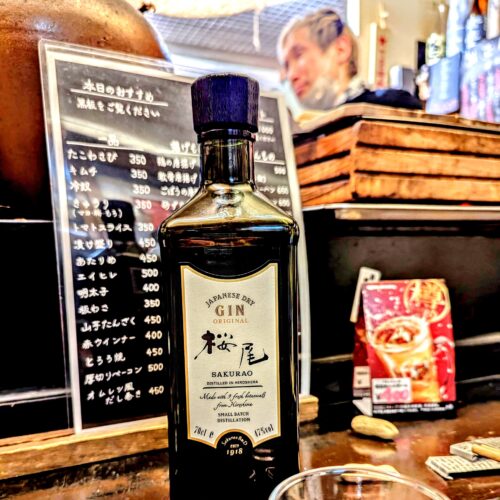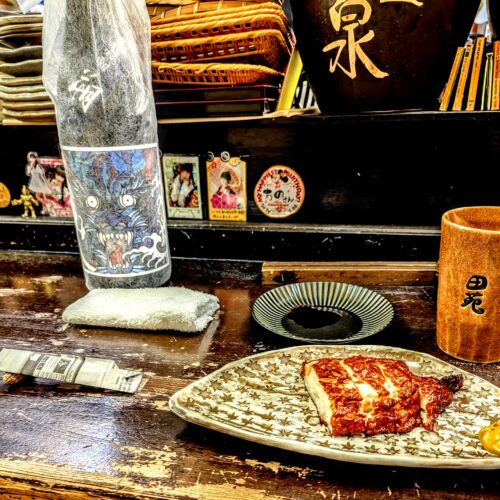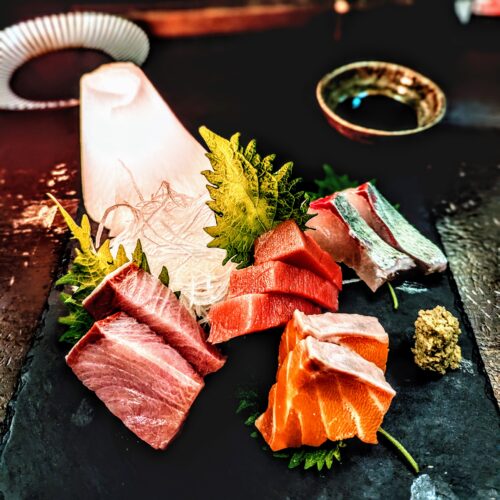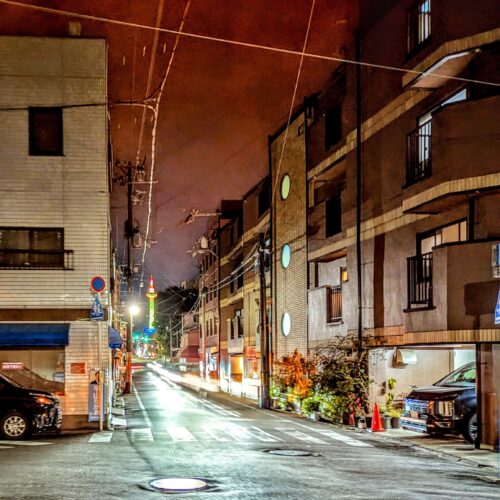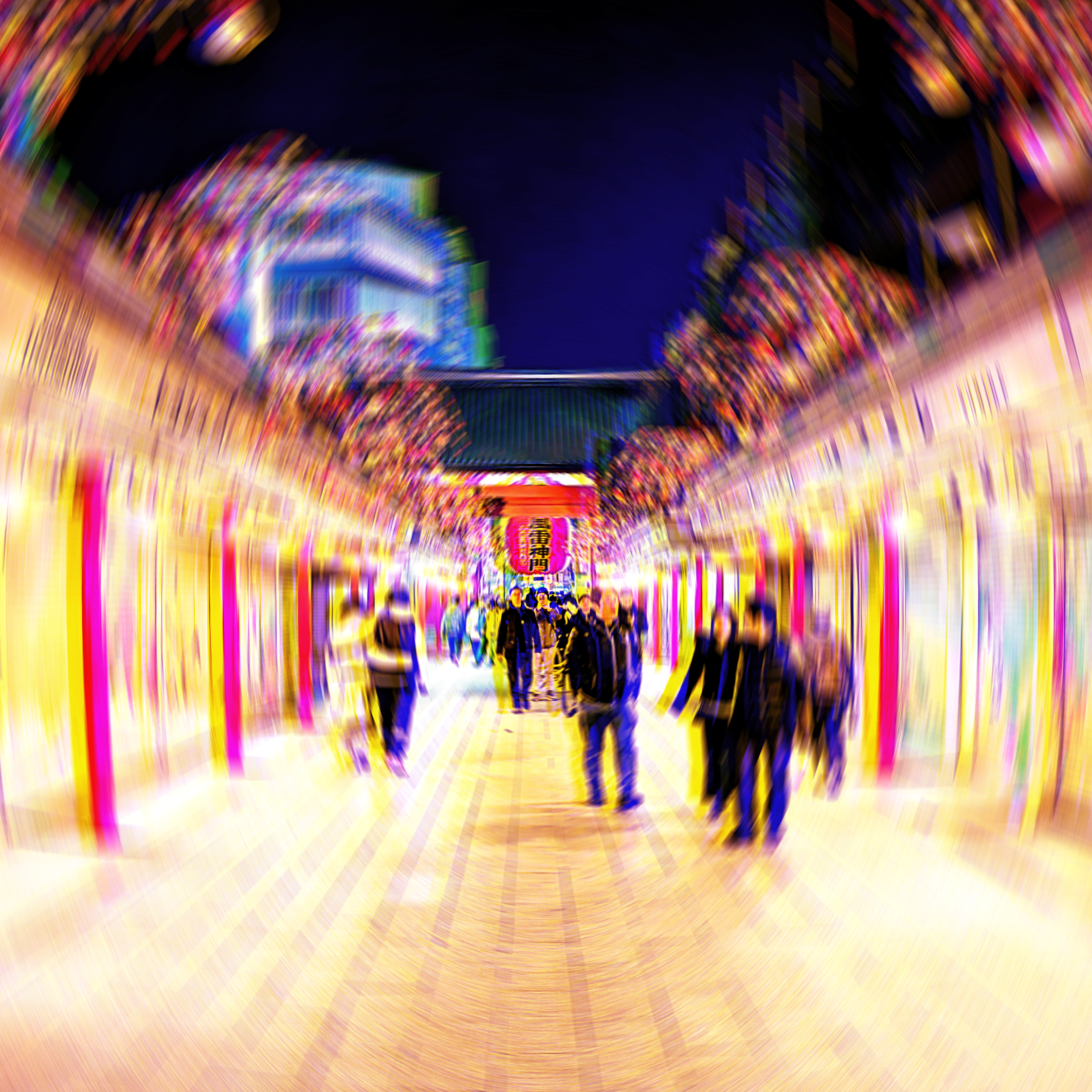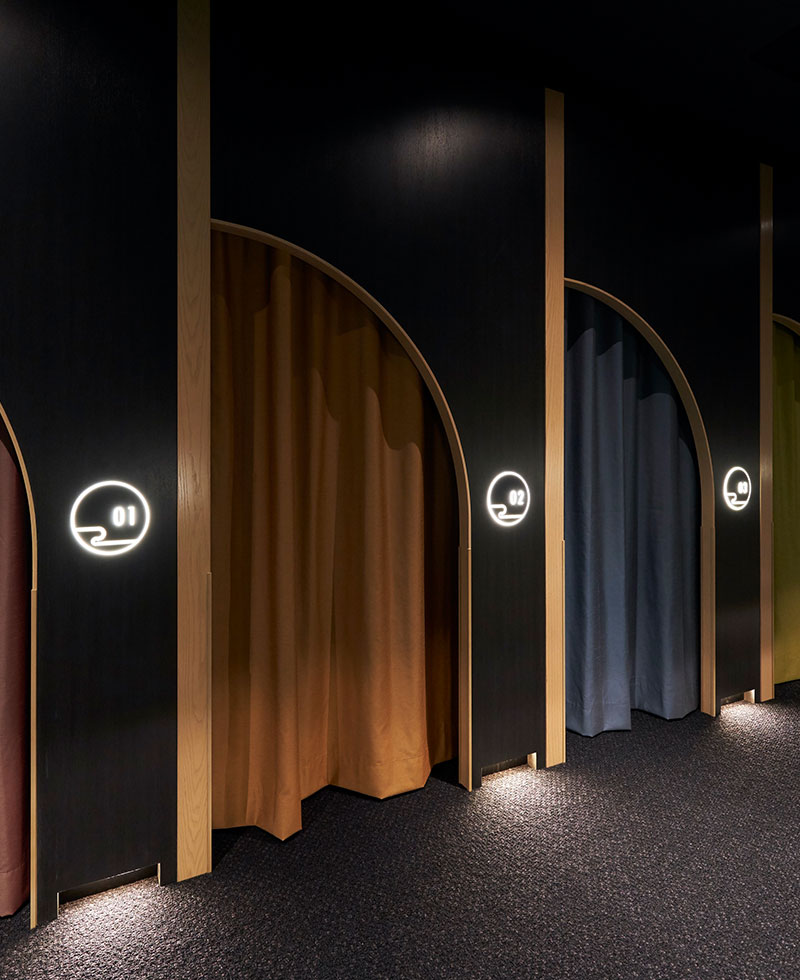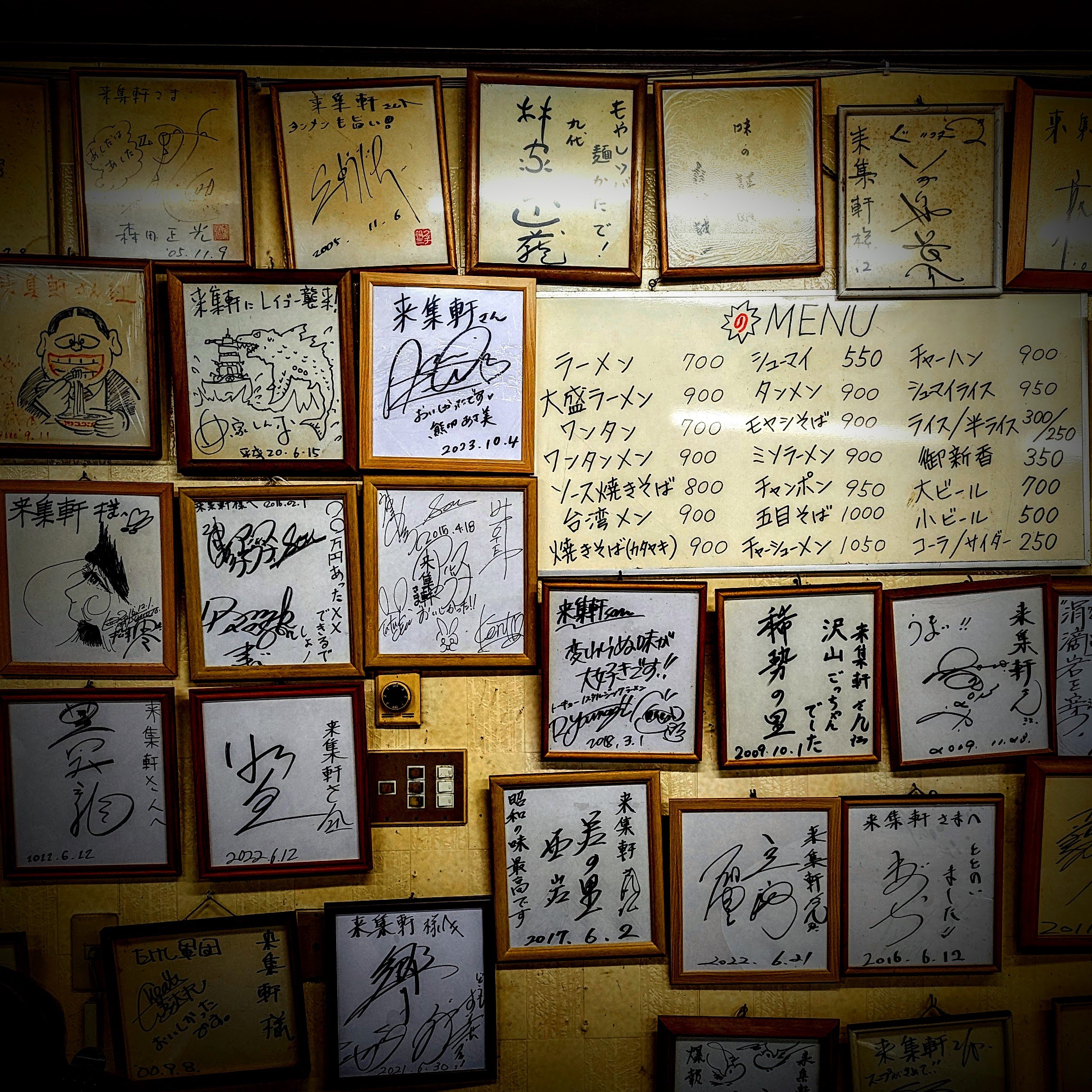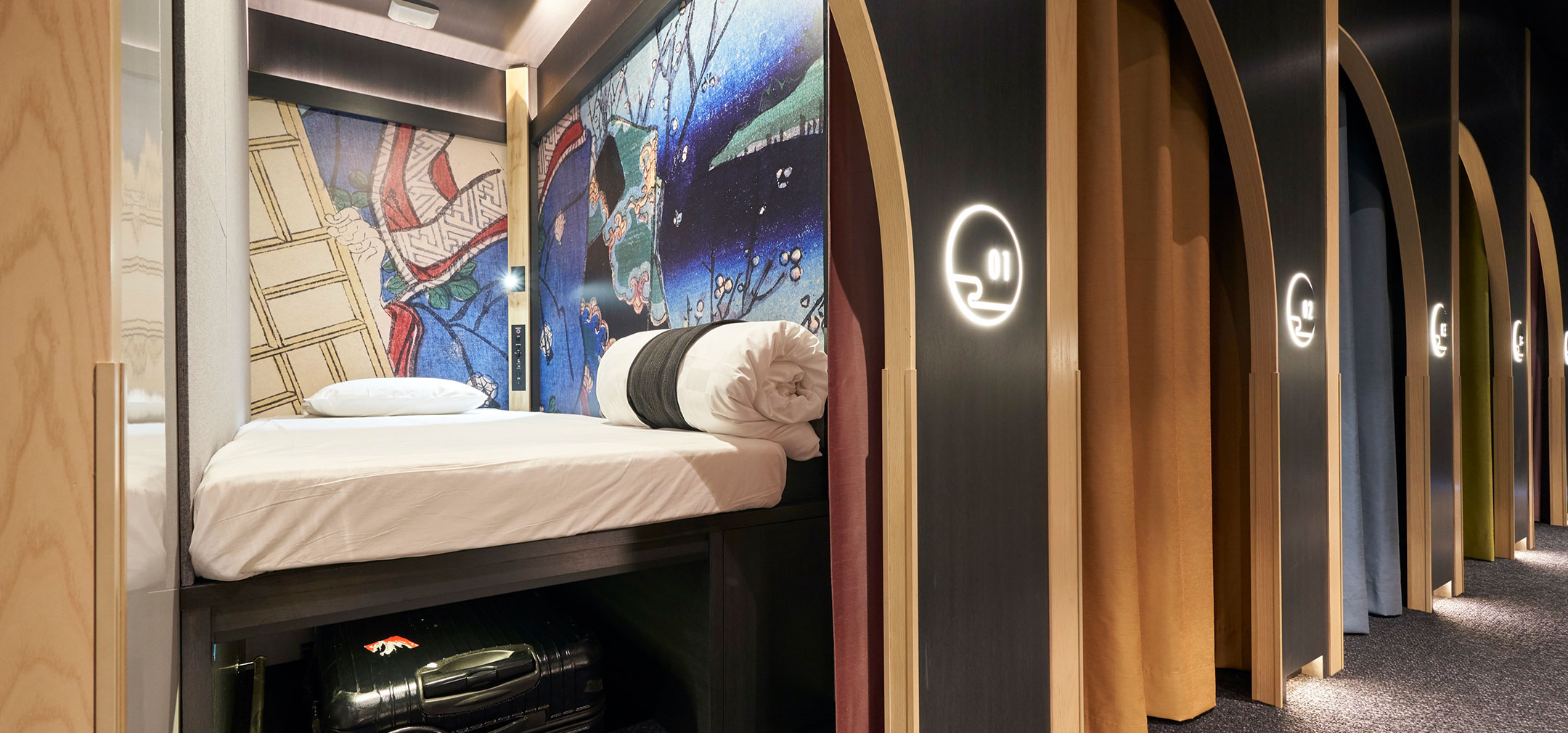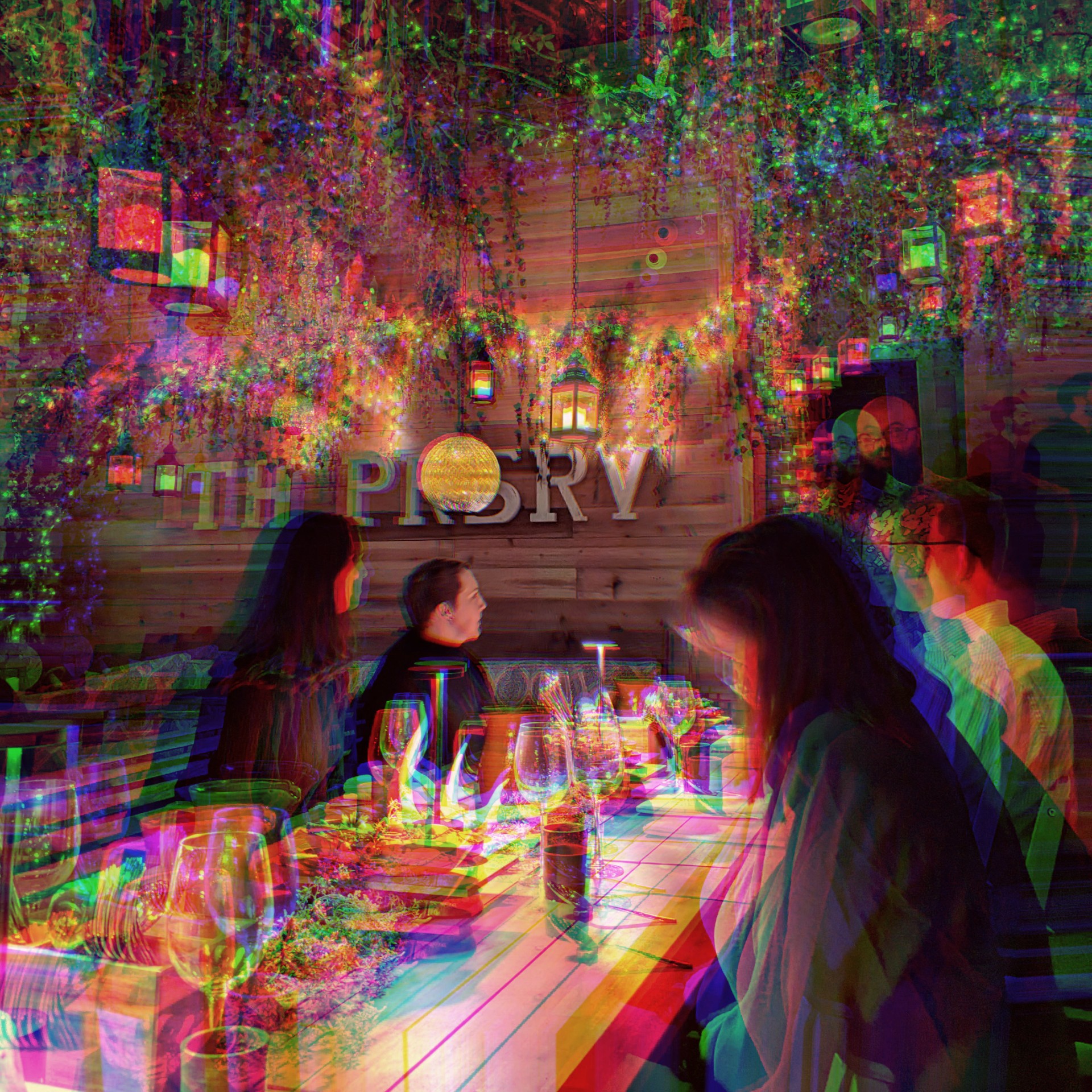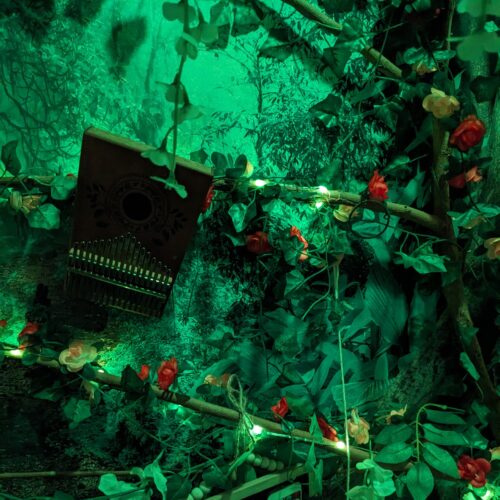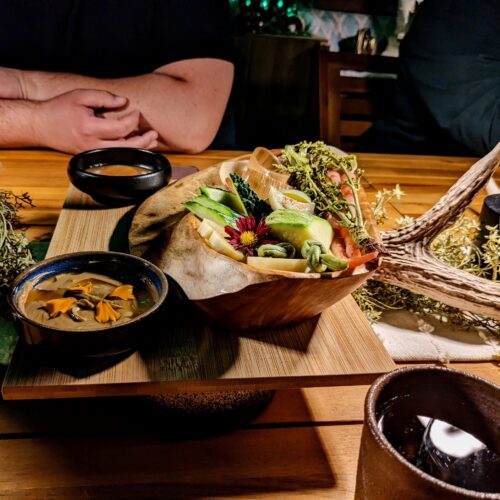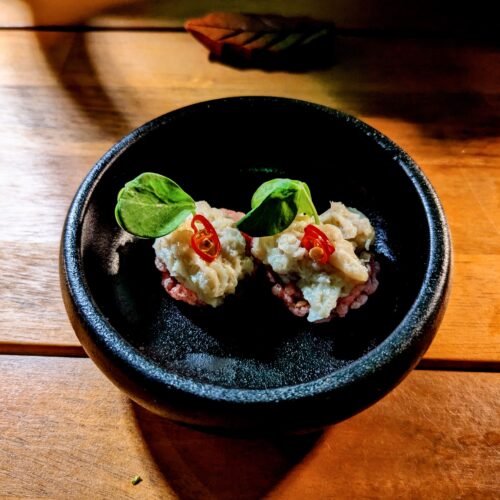It doesn’t feel quite right, meeting such a worldly person like Makoto Kubota for Japanese food in Japan, but he’s not one to make this meeting about what he likes, even if that’s precisely why we’ve met.
“There’s a restaurant I really love in Kōenji,” the Kyoto-born, Komatsu-raised musician and producer says, leading the way into a covered yokocho in Tokyo’s western ward, “but my wife said you probably didn’t come all the way to Japan just to eat tacos.”
Despite having a hand in some of the more noteworthy movements in Japanese pop over the course of his six decades in music, Kubota doesn’t hesitate to meet with me over a hot chocolate at his favorite cafe. Pulling up on a bicycle and immediately gifting me with several CDs from his reissue label named for his late, beloved cat, Aby Records, Kubota seems far more interested in learning about my background than in discussing his own career.
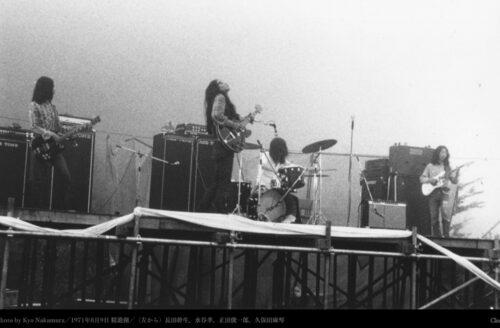
Though his earliest success came as part of Kyoto’s radical noise rock outfit, Les Rallizes Dénudés—replacing bassist Moriaki Wakabayashi, who famously hijacked a commercial jet with a katana and defected to North Korea — it was only by melting down musical borders that Kubota would make a name for himself. After traveling the United States in search of new sounds, Kubota was arrested in his home country for growing marijuana — eight years before Paul McCartney was jailed in Tokyo for possession — inspiring the Kyoto-jin to spend his time in prison writing his solo debut.
Though Machibouke (1973) bears plenty of influence from the Greenwich Village folk scene, his sound would quickly point west. FormingYuuyake Gakudan, known in English as the Sunset Gang, releases like the eponymous Sunset Gang (1973) and the Honolulu-recorded Hawaii Champroo (1975) helped introduce Okinawan folk to the Japanese mainstream while building sonic bridges between the American South and the South Pacific.

As one of the leading drivers of Japan’s tidal wave of neo-exotica alongside bandmate and longtime collaborator Haruomi Hosono, the Sunset Gang’s arrow pointed upward, even earning top billing on closing night alongside western heavyweights like John Sebastian (Lovin’ Spoonful) and Richard Bell (Janis Joplin, the Band) at Japan’s first benefit concert, Rolling Coconut Revue.
By the 1980s, the band would evolve into Sandii & the Sunsetz, upgrading Sunset session singer (and Kubota’s longtime partner at the time) to co-lead vocalist, pushing the Sunset sound toward the western New Wave. In turn, the new lineup gained even more exposure overseas, counting high-profile fans like Blondie and David Bowie while touring with the likes of Talking Heads, INXS, and Hosono’s Yellow Magic Orchestra all over the world, from the United Kingdom to New Zealand to Reggae Sunsplash ’87 in Jamaica.
By the 1990s, however, Kubota decided he’d had enough as a performer.
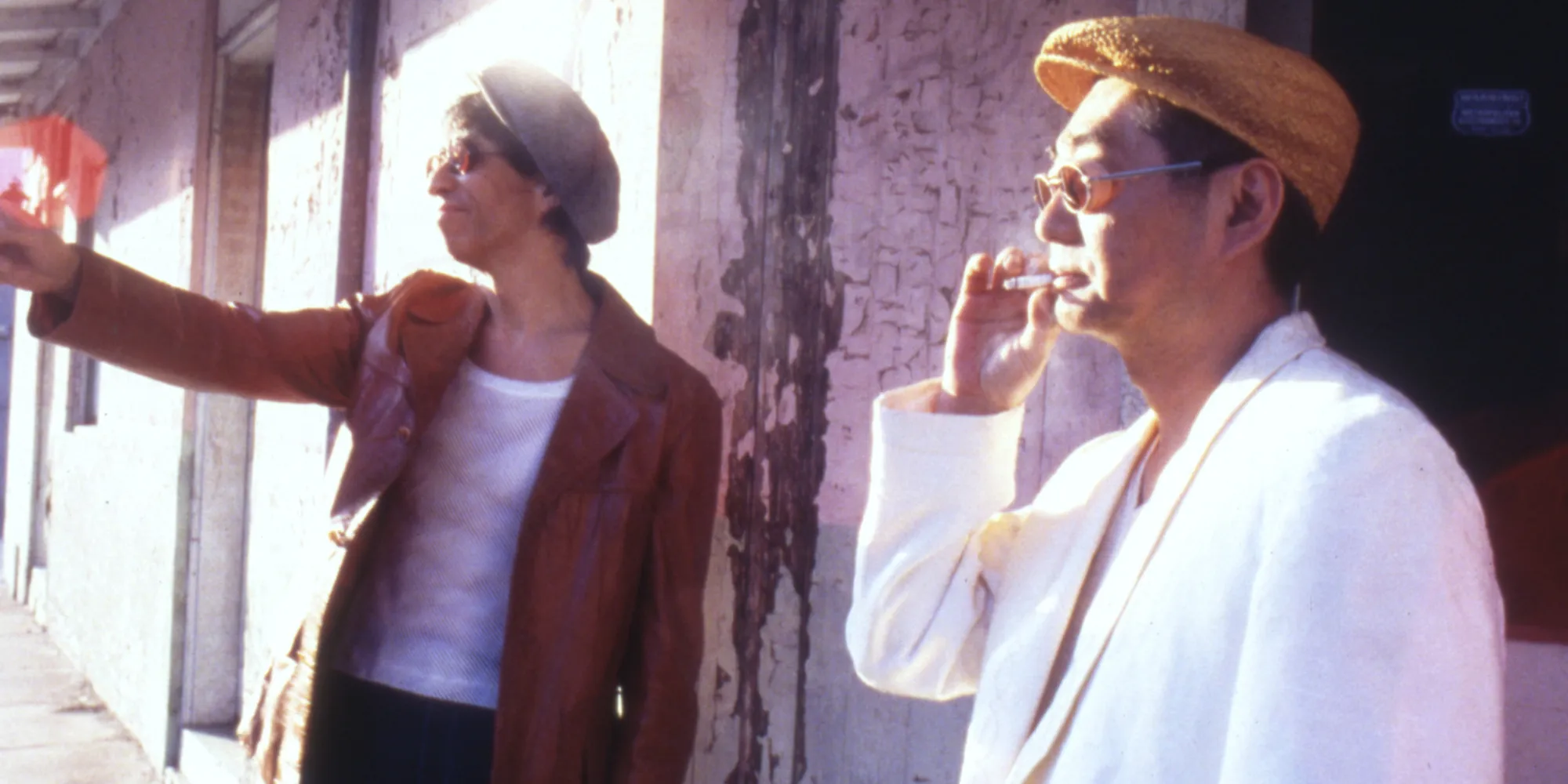
Since then, Kubota the musician has released only two records: 1999’s Road to Louisiana, a one-off duet album with Hosono (recorded in New Orleans alongside legendary session musicians like Jim Keltner and Garth Hudson), and On the Border, a profoundly eclectic solo effort released the next year.
Fully embracing his love of travel and musicology, Kubota began making field recordings and remixing traditional music in a series of oft-ambient world music under the banner of Blue Asia while producing the occasional music documentary.
Still, over the last few decades, his main impact has been felt from the sound booth, producing records for a wild world of artists ranging from pioneering Japanese singer-songwriter Sachiko Kanenobu to Singaporean crooner Dick Lee, even co-producing (with Hosono) Smile of Life, the eclectic, criminally undervalued solo record by New Orleans session player Ronnie Barron.

Now approaching his sixth decade in music, Kubota’s career has taken an unlikely detour back home of late, spearheading the restoration of a Rallizes’ discography that had been largely relegated to fuzzy bootlegs. Their latest, Jittoku ’76, due for digital release July 23rd, with vinyl pressings available this September, dusts off yet another never-before-heard recording session. Recorded in the band’s home town of Kyoto, the release marks another new chapter in the band’s notoriously enigmatic history and just one of several ongoing projects for the man.
Prior to our dinner with Yosuke Kitazawa, the Los Angeles-based co-founder of Temporal Drift — the label responsible for distributing Kubota’s Rallizes reissues and an accomplished music historian in his own right — Kubota and I sat down to discuss his earliest influences, his inherited love of cinema, and when we can expect new solo work from him in the future (hint: don’t hold your breath).
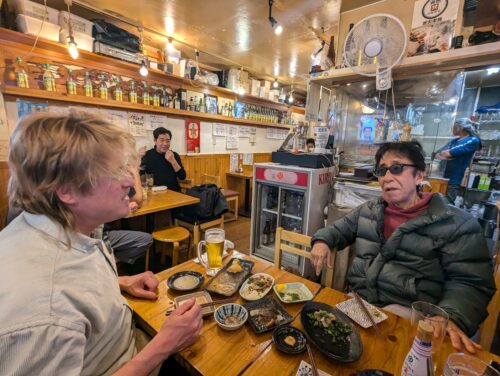
Could we start a bit with your origins, on your earliest influences?
Well, my family background is in cinema. My father, grandfather, three generations back, [they all owned a movie theater] and when you have a cinema in a smaller town, you’re going to host some concerts as well, so I was exposed to all kinds of music from a young age. And nearby was [formerly American-run Komatsu] Air Base, so there were lots of international people coming and going. Like in Liverpool, there was a lot of country western, rock-and-roll, Patti Page, Doris Day, Hank Williams.
Any specific musical memories that stand out from that time?
I actually saw the Cannonball Adderley Sextet [in Kanazawa] when I was about 13. My father’s friend was a promoter, so we were invited. Then in the mid-1960s, I saw the Duke Ellington All-Star Band: the full orchestra, with [saxophonist] Johnny Hodges. Everybody. It was their first time in Japan; I think they were fundraising for an earthquake or typhoon or something. And so when other kids were listening to the Beatles or the Stones, I was into American Jazz.
So when did you start playing, and specifically playing with Les Rallizes Dénudés?
Well, I moved to Kyoto in 1967 [to attend Doshisha University], right around when the Rallizes formed, but I was still a jazz kid then, playing jazz and bossa nova. I knew [Rallizes frontman Takashi Mizutani] from the beginning, and after the original bass player hijacked the airplane and flew it to North Korea in ‘69, after they broke up the first band, he asked me to join. They were more political back then [laughs].

And you?
No no, not at all. I was too busy with music…well, maybe I was a little bit of a Hippie, which is kind of embarrassing. But Mizutani had a huge influence on me: he was DJing old San Francisco psychedelia, or stuff like the Fugs, Velvet Underground, Tyrannosaurus Rex, and that inspired me to go to America. So I [took a break from] university, worked hard to save money, and, you know, asked my relatives to support me [laughs].
Once you did make it to California, what did you find?
I’ll say exactly the same thing Arlo Guthrie said he saw at Woodstock: “a lotta freaks!”
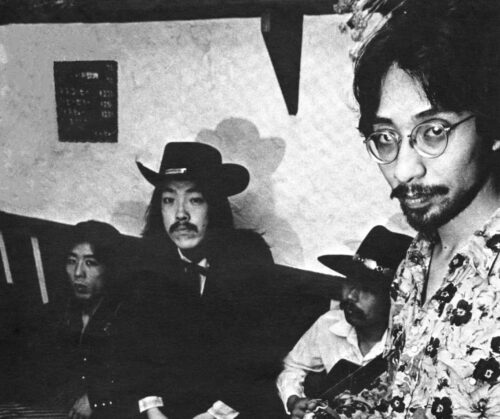
Later, with the Sunset Gang records, you’re recording in Hawaii, there’s this strong island influence. Where did that interest come from?
Like on Hawaii Champroo? You know, there’s such a mixture [of influences there], like Polynesia and then America, right? And Asia, too, very Japanese, Chinese, Filipino.
So in a way, you’re interpreting Japanese culture through a Hawaiian lens?
Even with the Hawaiian influence, I wasn’t enthusiastic about my own culture. I loved Okinawan music because it’s exotic, like reggae music, like Caribbean music, but at that time, I didn’t care too much about Japanese folk…I enjoy traveling, like to Ethiopia or Morocco, or Northeast Brazil, which is the root of Brazilian Carnival Culture. It’s the first place the people of the Iberian Peninsula moved…this blend of influence from the [conquistadores].

Where do you think this urge to travel comes from?
Well, my grandfather started his cinema business during the silent period…his father, my great grandfather Misao Kubota, was a writer and a bit of a Christian Missionary. He was born a few years before the Meiji Era [began in 1868], back when Christianity was still banned, so he had to go undercover…I don’t know…he was a mysterious figure.
Jumping forward, the Rallizes have enjoyed a major resurgence in recent years [despite never officially releasing a studio album], and maintain a cult following, even in the United States. Was this a surprise to you?
I’ve been getting used to it. It was, like five, six years ago, but I knew that there had been a lot of piracy going on—which is a compliment—but it’s still illegal…and about four years ago, Mizutani called and we discussed how to cope with it. I said let’s do a [final] tour, and we made plans to reissue the back catalogue. We were talking for weeks, and then he just stopped calling me. Then, a few months later, his wife contacted me, and said he had passed away.
Horrible. Could you tell us a little about your most recent release, YaneUra Sept. ‘80?
I’m very grateful that [Mizutani] and his family kept very good care of all the old cassettes, videotapes, and reel-to-reel…but some are a copy of a copy of a copy, so it’s a bit of a mess. It takes [a lot of work] to find which are good.
[YaneUra Sept. ‘80] was from a moment with Fujio Yamaguchi [formerly of Kyoto glam band Murahachibu], another guitar legend. A real serious rock and roll/blues guitar player…and he was in the band for, what, seven or eight months? So we’ve already released two live albums [from that period, including 2024’s YaneUra Oct. ‘80], and there should be another one coming. There should be some studio demos, too, we just haven’t pinpointed them yet.
Have any other previous bandmates been involved in these releases?
Well, most of them are gone, right? Only some are still active, like Doronco [Gumo] still plays bass, and one original guy, [Takeshi] Nakamura became a photographer, but they’re no longer in the music business. I have been from the beginning.
What’s the reception been like for these reissues in Japan?
According to Spotify, 90% of listeners are coming from California or New York. The remaining 10% is shared by Japan and Europe. But in Japan, Rallizes fans are from an older generation that has more money to spend, so record sales are split 50-50 between the U.S. and Japan.
It’s such an interesting phenomenon…
It’s a good feeling that our music has listeners in America, where rock and roll came from.
So in a perfect world, what would come next for the Rallizes?
Well, if perhaps Jim Jarmusch came to me and said he wanted to do a Rallizes movie, or the director of The Velvet Underground documentary [Todd Haynes]…we have some offers, but we cannot do three Rallizes documentaries. We need one good one.
Any other recent projects you’ve been working on?
I have so many ongoing projects. I went to the Solomon Islands six ago now, yeah, and I laid the groundwork for demo recordings…I was planning to go back to make recordings with more tracks, an assistant, and a better microphone. But then came COVID time.
And what inspired you to go to the Solomon Islands?
My wife saw some Hollywood war movie, where the American soldiers land on this unknown island, and are greeted by these island kids who are singing, and she fell in love with [the melody], and it was lingering on her brain, and she didn’t want to give up. Finally, she found it on YouTube after seven or eight years. It was the The Thin Red Line! They used a vocal sample from the island, like a local island lullaby, and they stole it. But they did a good job.
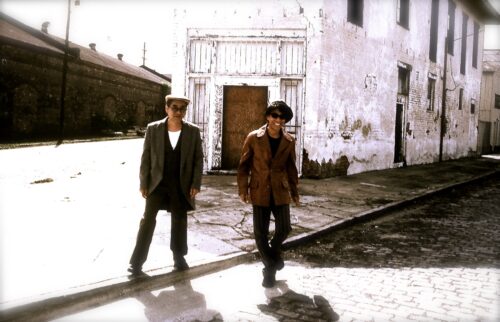
What’s your relationship with Haruomi Hosono these days? Do you stay in touch?
Yeah, all the time. Recently we appeared in a band for some special tribute thing for [Road to Louisiana project Harry & Mac]…we did a talk show in Okinawa three months ago, and are planning to do another one in Shikoku this spring [he later adds that both made a cameo in the French-Japanese feature Spirit World (2024), starring Catherine Deneuve].
What would it take to get you to start performing your own music again?
People ask that…I wonder why. I enjoy [singing], but I’m more into doing other stuff. If somebody comes to me with the big bucks, I might take it [laughs]…but I’m more into the movies.


